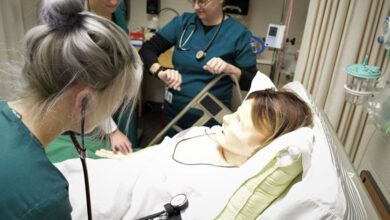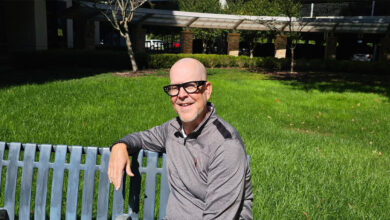Building a digital hospital from scratch


Cleveland Clinic London is the private non-profit healthcare organisation’s latest fully digital international hospital branch to open in 2022.
Gareth Sherlock, former CIO of Cleveland Clinic Abu Dhabi and London, detailed their journey – doubling down on their experience in setting up its IT systems and services from scratch – in the keynote session, “Building a digital hospital – Cleveland Clinic story in London.”
Firstly, Cleveland Clinic landed in London looking not to disrupt the well-established healthcare market there but to complement it.
“It’s a great place for Cleveland Clinic to learn, innovate, and grow,” said Sherlock, who is now running his own digital health consultancy Turimetta Consulting.
The market is also where the organisation found an opportunity to further grow its brand, as well as attract talent.
A global design localised
In building its IT system, the organisation realised that it could not bring the same systems and replicate the same workflows from the main campus in Ohio – as is the case in the Abu Dhabi branch.
What they did, Sherlock shared, is they developed a global care delivery and support model and design.
For London, they contemplated which services from North America they could centralise and those that could be localised.
That became the basis of its global IT design, which was later localised in London in a strategic manner. What this meant, according to Sherlock, is that changes were only introduced to meet regulatory requirements from the United Kingdom government and adhere to the UK standards of care delivery.
“Other than that, we stayed the same and we made sure that we didn’t specialise or localise for physician preference or clinician preference.”
As with the rest of Cleveland Clinic, London is also powered by its own instance of the Epic EHR. The 184-bed hospital is also cloud-enabled.
Additionally, they had to rationalise and consolidate about 6,000 of Cleveland Clinics’ applications down to 80 for the London hospital.
From 2016 to 2022, Cleveland Clinic London worked with carefully selected vendors and integrators to deliver more or less 150 projects, including the EMR and two data centres.
Long stabilisation, optimisation
After its go-live, the London hospital went through a long period of stabilisation and optimisation that went on for 12-18 months as opposed to the usual 3-6 months.
“London was different. Everything was new. We had brand new policies and procedures. We spent three years developing them all – thousands of them. We had new systems, which may be pretty close to Cleveland [Main Campus] but they weren’t the same: there were localisations and differences. We also had some new workflows and innovations that we delivered to the organisation as well,” explained Sherlock.
“And not only that, everyone was new. We’d recruited everyone from scratch, so no one had ever worked together. We had to make sure that people were trained incredibly well and ready to serve our patients.”
Keys to success
The construction of the London hospital coincided with various geopolitical and logistical disruptions, including Brexit, the blocking of the Suez Canal, and the COVID-19 pandemic. It also had to open shop while construction was still ongoing. Despite the odds, they proceeded with opening a fully digital hospital from scratch.
For the team, what made them successful in this endeavour was having the right people.
“Healthcare is generally a risk-averse industry and people tend to not like a lot of change. But this project is all about change. It’s all about transformation. So you need people who can handle that. People who can handle lots of variability, lots of uncertainty, lots of complexity,” Sherlock said.
Other success factors that went with it were a strong culture, having engaged stakeholders and committed partners, robust governance, and financial stewardship.
“The IT budget that we had from the beginning was not exceeded. We kept within it. We actually came in under it, even with all the challenges and complexities,” Sherlock boastingly shared.
With everything, Cleveland Clinic made sure they stayed true to their mission in IT.
“It’s not about delivering great systems and providing great support,” Sherlock maintained.
“It’s more than that – IT needs to be a strategic partner. It’s the same mission as the clinical teams: it’s to deliver an exceptional patient experience and deliver systems and workflows that empower our caregivers to deliver exceptional care.”




